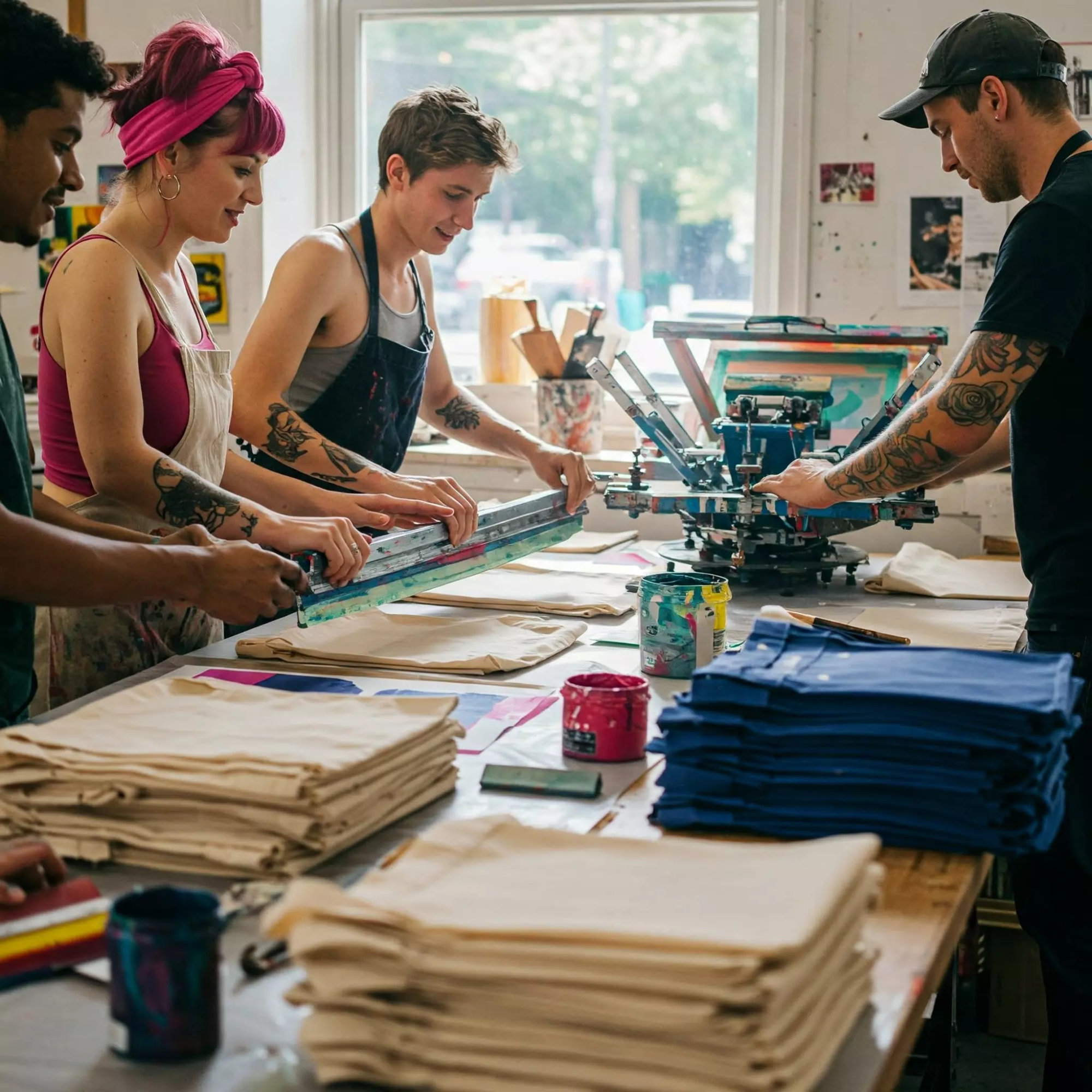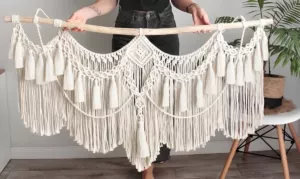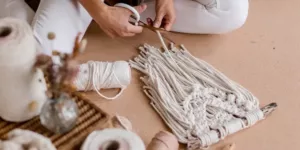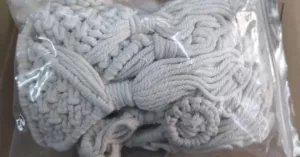Tote bags are not just a trendy accessory; they’re a canvas for personal expression. Whether you’re designing custom bags for your brand, creating unique gifts, or selling at craft fairs, the method you use to print on your tote bags can make a huge difference. Among the various techniques available, screen printing has stood the test of time as one of the best methods to bring your designs to life.
In this article, we’ll cover the 5 best tote bag screen printing methods you need to know. These techniques will help ensure your prints are vibrant, durable, and high-quality. Let’s dive into these tried-and-true methods that can elevate your designs and set your tote bags apart from the rest.
1. Traditional Screen Printing: The Classic Choice
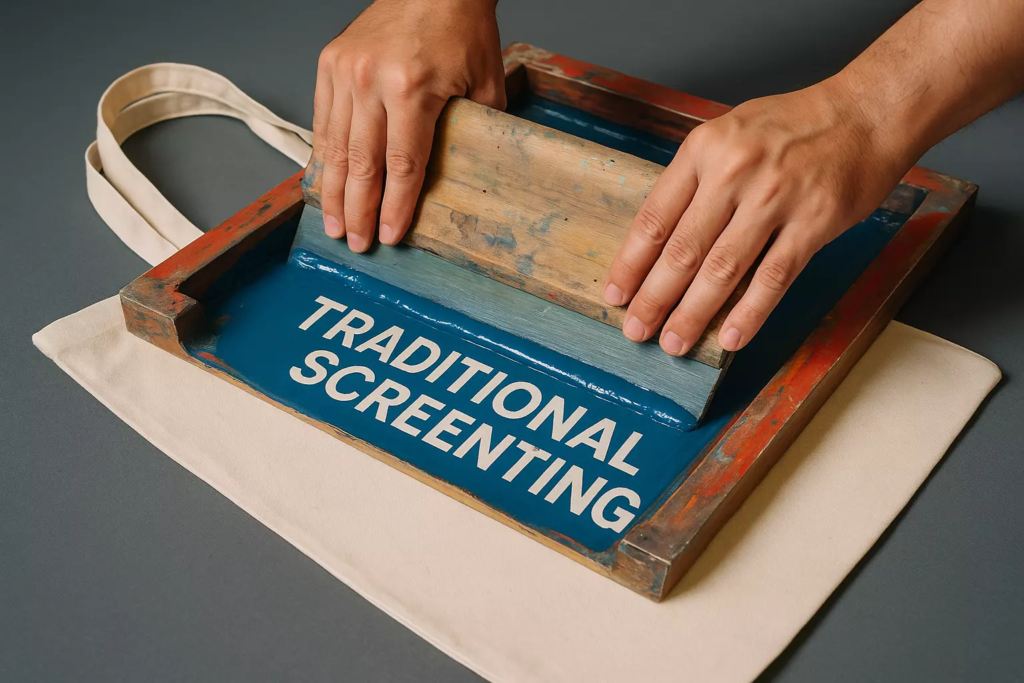
Traditional screen printing is the go-to technique for those seeking high-quality prints with sharp details and vibrant colors. It involves pushing ink through a mesh screen (the stencil) to transfer your design onto the fabric. The result? Clean, professional prints that last.
Why Choose Traditional Screen Printing?
- Durability: Traditional screen printing uses a thick layer of ink, making it highly resistant to wear and tear. This is especially important for tote bags, which are often used repeatedly.
- Vibrant Colors: The ink is applied in a way that makes colors pop, providing a sharp contrast against the fabric. This is particularly important if your design features bold colors or intricate details.
- Cost-Effective for Bulk Printing: While the initial setup can be expensive, screen printing becomes much more affordable when you’re printing in large quantities.
2. Water-Based Screen Printing: Eco-Friendly and Smooth
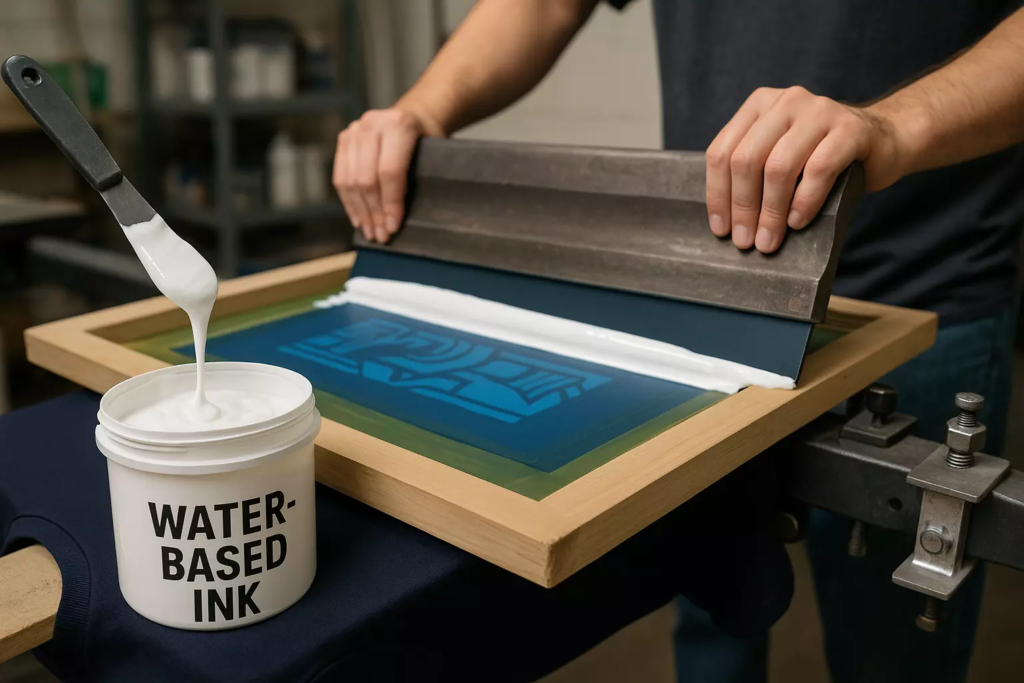
For eco-conscious designers, water-based screen printing offers a sustainable alternative to traditional inks. It uses water as a solvent instead of harmful chemicals, making it a safer and environmentally friendly choice.
Why Choose Water-Based Screen Printing?
- Soft Feel: Water-based inks are absorbed into the fabric rather than sitting on top, resulting in a softer, smoother feel. This is perfect if you’re creating high-end, luxurious tote bags.
- Eco-Friendly: With a reduced environmental impact, water-based inks are free from harmful chemicals and toxins, making them a top choice for green brands.
- Breathable Prints: The ink allows the fabric to breathe more easily, making it ideal for designs that require flexibility and movement.
3. Discharge Screen Printing: Perfect for Vintage or Retro Styles
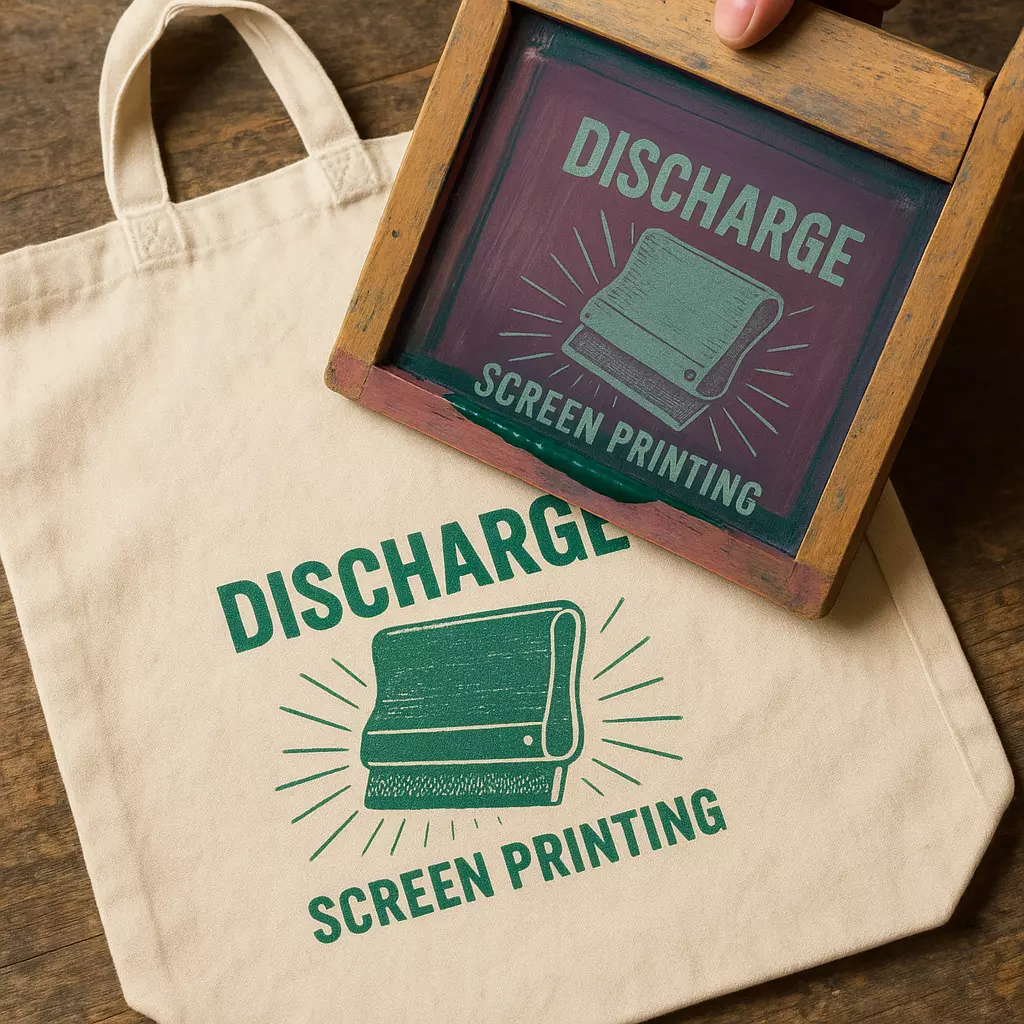
Discharge screen printing is a method that works by removing the dye from the fabric and replacing it with a new color. This technique is often used to create a “vintage” or “distressed” look, ideal for those looking for something unique and aged.
Why Choose Discharge Screen Printing?
- Unique Look: Discharge printing results in a softer print with a vintage, worn-in look. It’s perfect for creating retro designs or achieving a distressed aesthetic.
- Great for Dark Fabrics: Unlike traditional methods, discharge printing works particularly well on dark-colored fabrics, as it bleaches the fabric before adding color.
- No Raised Ink: The ink blends into the fabric, making it smooth to the touch, which is a plus for those seeking a more natural feel.
4. Plastisol Screen Printing: The Durable and Vibrant Option
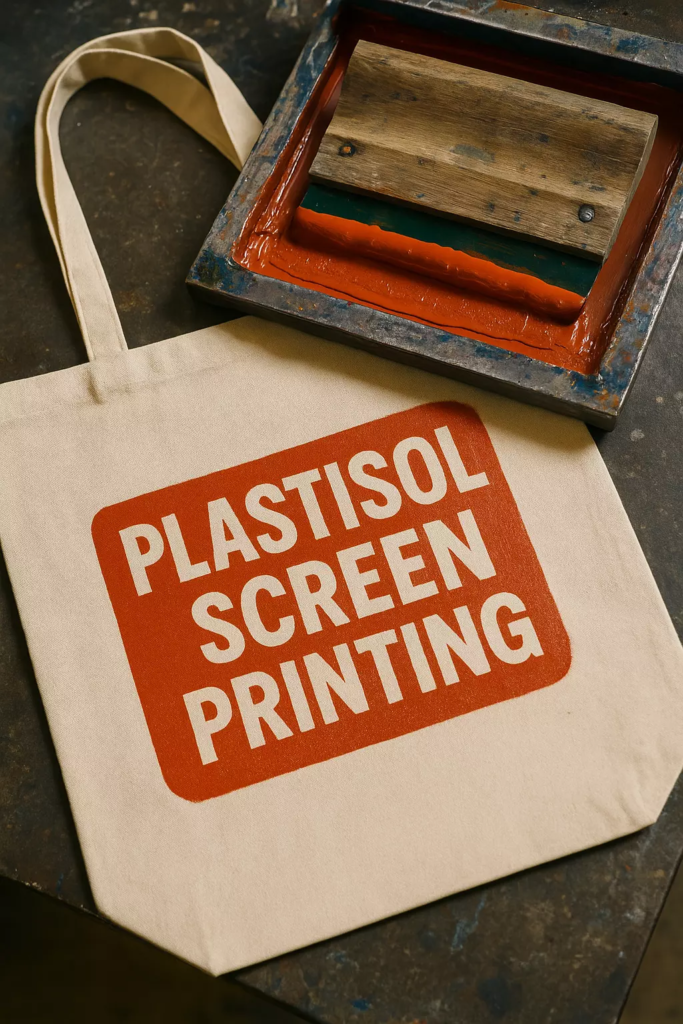
Plastisol screen printing is one of the most commonly used methods for tote bag designs. This method uses a PVC-based ink that sits on top of the fabric, making it one of the most durable options available.
Why Choose Plastisol Screen Printing?
- High Durability: Plastisol ink is thick and adheres well to fabric, making it resistant to cracking and fading, even after multiple washes.
- Bright and Vivid Colors: The ink’s opacity allows for vibrant colors that really pop, even on dark fabrics.
- Ideal for Large Designs: The ability to print with a thicker layer of ink makes it easier to create large, bold designs.
5. Heat Transfer Printing: Quick and Versatile for Small Runs
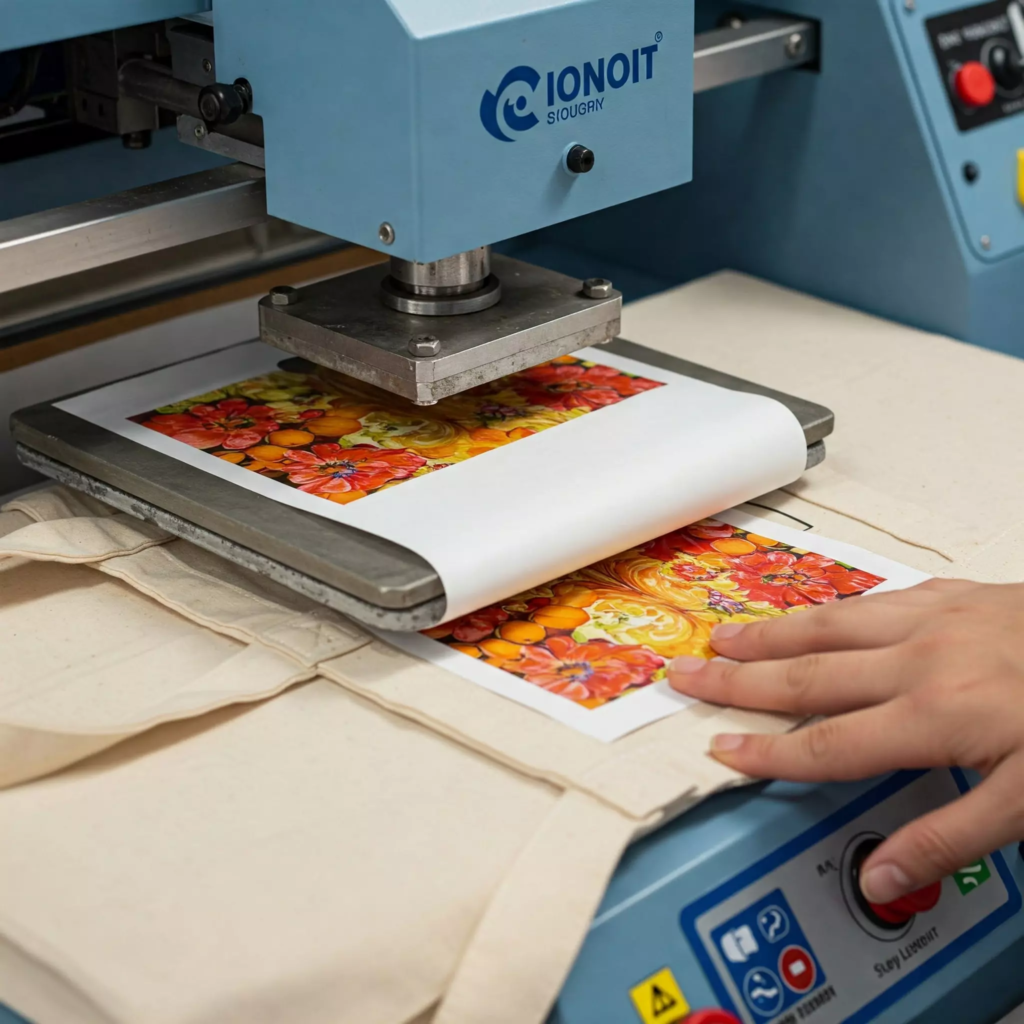
Heat transfer printing involves using heat and pressure to transfer a design from a special transfer paper to the fabric. It’s often used for small runs or when speed is a priority.
Why Choose Heat Transfer Printing?
- Quick Turnaround: Heat transfer printing is faster than other methods, making it a great option for those on tight timelines.
- Perfect for Small Runs: If you’re not printing in bulk, heat transfer printing allows for customized tote bags without the high setup costs of traditional screen printing.
- Detailed Designs: Heat transfer printing allows for high levels of detail, making it ideal for intricate designs or full-color graphics.
The advantages and disadvantages of different screen printing techniques for making tote bags
Here’s a table comparing the advantages and disadvantages of different screen printing techniques for making tote bags:
| Printing Technique | Advantages | Disadvantages |
|---|---|---|
| Traditional Screen Printing | – Durable prints, long-lasting | – Limited color range per print; requires multiple screens for multi-color designs |
| – Cost-effective for large orders | – Requires longer setup time | |
| – Suitable for most fabric types | – The process can be messy | |
| Water-Based Screen Printing | – Eco-friendly, uses water-based inks | – May not be as durable on dark fabrics |
| – Softer feel on the fabric | – Longer drying times and may need more curing process | |
| – No harmful solvents involved | – Limited opacity, especially on dark fabrics | |
| Discharge Screen Printing | – Provides soft feel as the ink removes color from fabric | – Requires specific fabric types (preferably cotton) |
| – Produces vibrant, vintage-style prints | – More complicated process, requiring high heat and correct curing | |
| – Great for light-colored fabrics | – Can result in uneven results if not done properly | |
| Plastisol Screen Printing | – Extremely durable, long-lasting prints | – Less eco-friendly due to use of PVC-based inks |
| – Works well with dark-colored fabrics | – Stiff feel on fabric | |
| – Fast curing and easy to handle | – Requires high curing temperatures | |
| Heat Transfer Printing | – Allows for complex, full-color designs and gradients | – Prints may peel or crack over time |
| – Fast process, suitable for short runs and customization | – Not as durable as screen printing on fabric | |
| – No need for screens or setup time | – Requires specialized equipment (heat press) and is not as cost-effective for large batches |
Each technique has its own strengths and weaknesses depending on the type of design, fabric, and production scale.
Choosing the right screen printing method for your tote bags is essential to achieving the best results, whether you’re looking for durability, color vibrancy, eco-friendliness, or design flexibility. From traditional methods like plastisol and water-based printing to innovative approaches like discharge and heat transfer printing, each method offers its unique advantages.
By understanding the strengths and weaknesses of each technique, you can select the one that best aligns with your design vision and business needs. Whichever method you choose, ensure that it complements the material and design of your tote bags to create a product that your customers will love.
FAQs
Can I print on dark-colored totes using screen printing?
Yes! Special inks designed for dark fabrics, such as plastisol, can be used to create vibrant prints even on darker totes.
Is water-based screen printing as durable as traditional screen printing?
Yes, though the durability may depend on the fabric and care of the tote. Generally, water-based prints are long-lasting if treated correctly.
Is discharge screen printing suitable for all fabrics?
Discharge printing works best on 100% cotton or cotton-blend fabrics, as synthetic fibers don’t discharge well.
Does plastisol screen printing work on light-colored fabrics?
Absolutely! Plastisol works well on both light and dark fabrics, offering excellent results on any tote bag material.
Can heat transfer prints be as durable as screen printing?
While heat transfer prints can be durable, they tend to fade more quickly compared to screen printing, especially with frequent use or washing.

